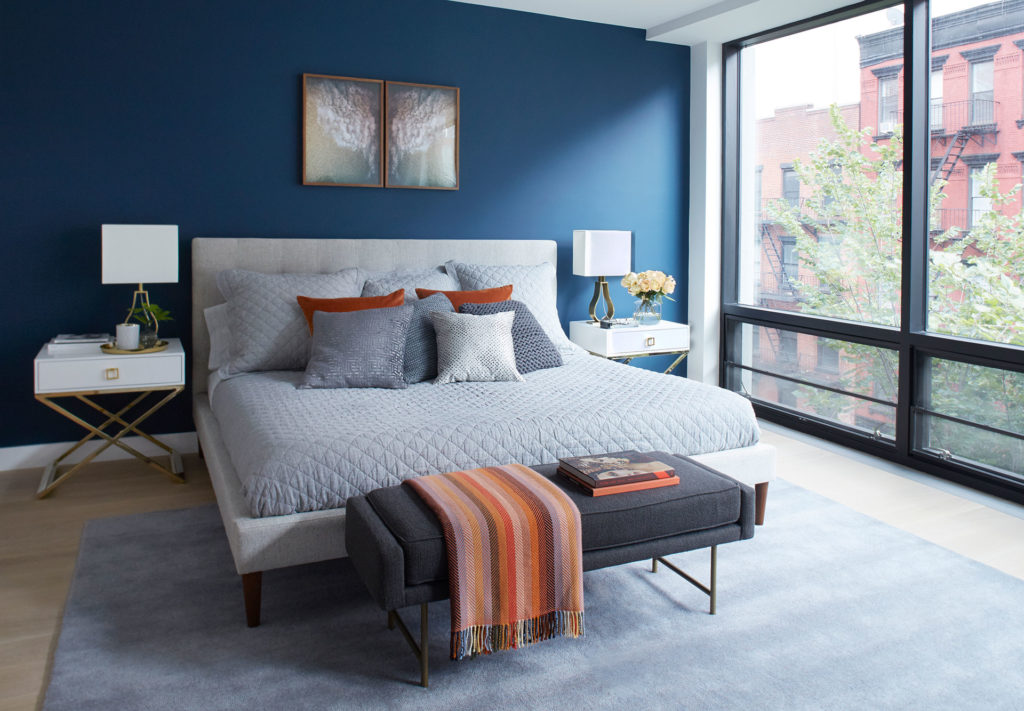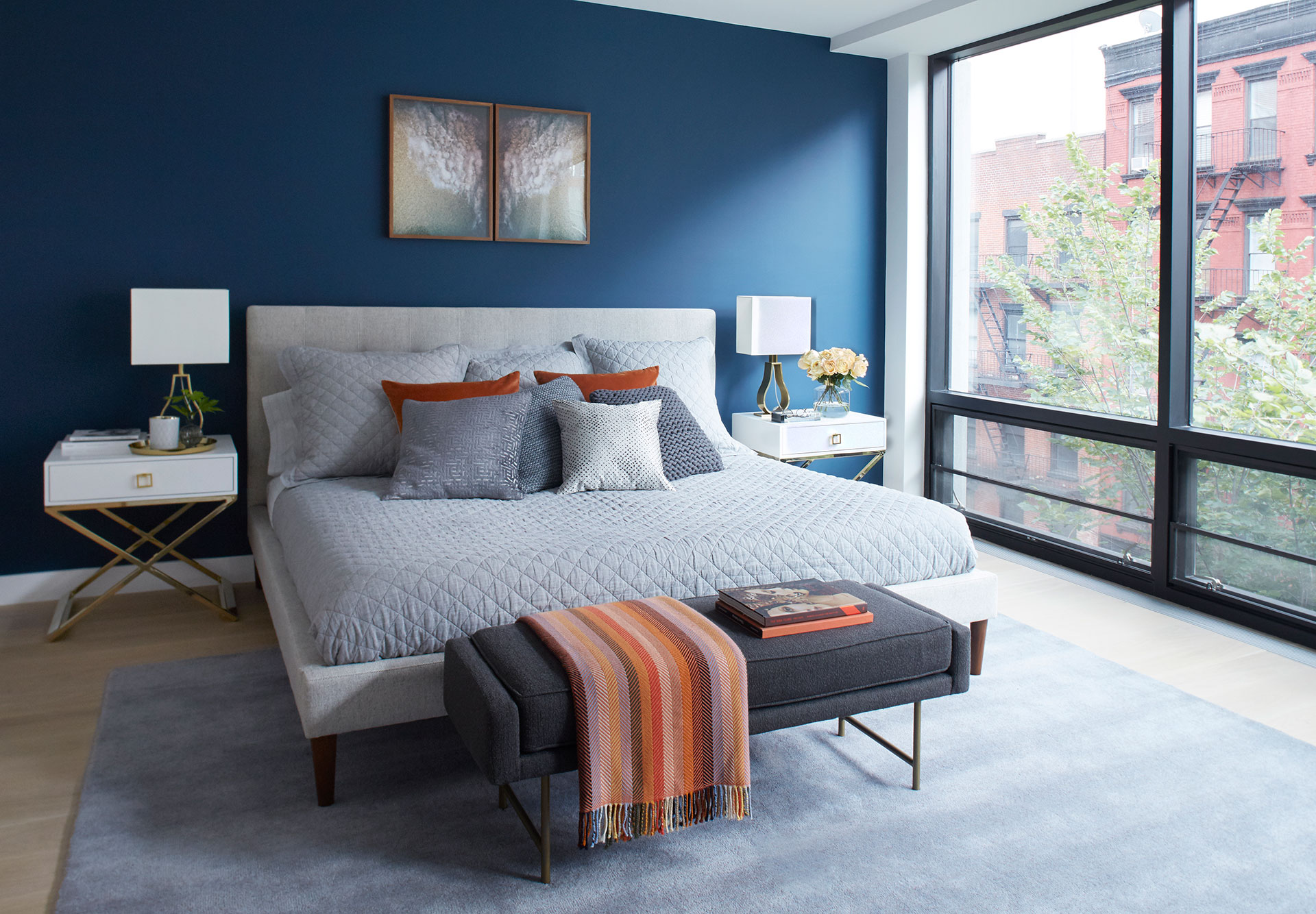
Source: Tara Benet Interior Design
If your favourite colour is magenta, it may be great for a scarf but perhaps not as the wall colour of your bedroom. Choosing the best colour that promotes relaxation and sleep can make all the difference to your sleep experience.
Pink is said to be playful and sexy while blue carries a more calming vibe. Purple shades can be mysterious, rich and royal, but yellow is more joyful, loving and cheerful. Shades of brown evoke feelings of being grounded, positive and earthy. Green hues range from soothing and refreshing to promoting fertility and health. So, in order to pick a paint colour for the bedroom, you must first decide how you want to feel when you walk in there!
What Studies Show
Complementary medicine includes many holistic techniques, one being colour therapy. Studies show that introducing certain colours to children on the autistic spectrum, for example, can alleviate stress and anxiety. Conversely, red is a highly charged colour used to stimulate and anger the bull in a bull-fight and the colour of choice for dining rooms to inspire lively conversation. Blue-light is used by therapists when treating seasonal affectedness disorder while orange is used for people with depression. Clearly, colours have an impact on our senses. Some people react instantly to colours while others take a while for the effects, however subtle, to show.
According to a survey conducted by Travelodge in the UK, those participants that slept in a room painted blue had the best sleep quality with green and pale yellow a close second place. Primary colours like white and red apparently raised people’s blood pressure, so they should be avoided in the bedroom. The science collected during similar studies is great to consider but when do your colour preferences come into the decision-making?

Source: Regan Baker Design
How to Pick the Right Colour
These studies are great tools when you consider the research collected. Considering the data that red may be too strong a colour on your bedroom walls, you can still consider the paleness of the tint as well as the finish of matte over glossy, which tends to intensify any colour. If white is too stark and somewhat stimulating, choosing a colour such as ivory or bisque, or perhaps eggshell can make a difference.
If red is a colour that you really want to have in your bedroom, you can choose red accessories. If green is what you are looking for, don’t choose forest green, but something more subtle, warm and comforting. Paint shops have the technology today to create the perfect colour and finish to your specifications. They can blend a variety of colours until the perfect shade is achieved.
Bedroom wall colour is only one component of your sleep experience. A combination of your wall colour, bedding accessories, furniture, and lighting can create the ideal sleeping environment.
Following a consistent evening routine is also necessary to promote good quality sleep, including eating a light dinner, reducing screen time, taking warm baths, practising gentle yoga and meditation.
Dreaming in technicolour is possible when you fall asleep to the perfect 50 shades of your favourite colour!
Gerry, Your Sleep Expert

